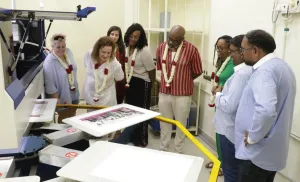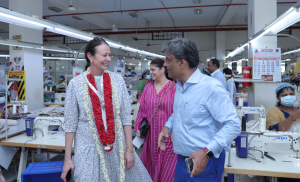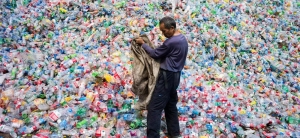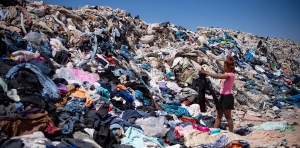Rana Plaza: Six Years On
On the 24th of April 2013 the world awoke to the shocking, yet arguably inevitable news of another fast fashion factory collapse. Rana Plaza – a garment construction factory in Dhaka, Bangladesh is to date the biggest tragedy in the fashion industry, taking the lives of 1,134 members of staff and injuring many more. To attract or sustain competitive business contracts with Northern buyers, the factory owner built unofficial extra floors, which over time began to cause detrimental structural strain. Ominous cracks began to appear the day before the collapse, and on the 24th of April – despite workers pleading with management not to be sent inside this clearly dangerous building – over 2,000 people were sent inside to get to work. Shortly after 9.00am, the building began to crumble – taking less than a minute and a half to completely collapse.
Although this collapse was by no means an isolated incident, this particular disaster ignited worldwide outrage at the appalling conditions faced by many of those who manufacture clothes for the global North. Many domestic and foreign unions dubbed it as “mass industrial homicide”. Unregulated conditions, low wages and an unsafe working environment are all too commonplace for many of those people in developing nations involved in an industry that, some might argue, puts profit before the welfare of those who ensure the continuance of a relentless stream of production. In fact, according to Andrew Moore’s documentary, ‘The True Cost’ the year following the Rana Plaza disaster was the industry’s most profitable of all time, and today the garment industry is said to be worth over $3 trillion. The industry is dominated by large companies in the global North who seek to manufacture garments as cheaply as possible in countries where the wages are low and the working community is desperate for employment.
The cyclic issue of whose responsibility the disaster was is complex and inconclusive. Even after six years, it is still hard to pinpoint who is at fault – was it the fashion brands for demanding cheaper and faster production? Was it the factory owner for prioritising contracts over staff safety? Was it the factory managers who saw with their own eyes and heard with their own ears that the building was severely unsafe? Or, is it us – the Northern consumers who demand a constant stream of cheap and ‘replaceable’ garments?
In the wake of enormous global catastrophes such as Rana Plaza, it is all too easy for us to feel our actions as individual consumers are negligible and insignificant, but this is simply untrue. Every, single time you buy something, you are casting a vote with your money, and in these times of environmental and socioeconomic uncertainty, your vote has never been more important. Next time you’re revamping your wardrobe, ask yourself if you really need another fast fashion trend. Instead, why not invest in other, more sustainable business models. Buy well-made, ethically sourced slow fashion garments, second hand garments or even organise a clothes-swapping evening with your friends. Almost every business model is centred on the idea of supply and demand. If we decrease the demand for such practices, we will be decreasing the strain on manufacturing facilities, the environment and society as a whole.




